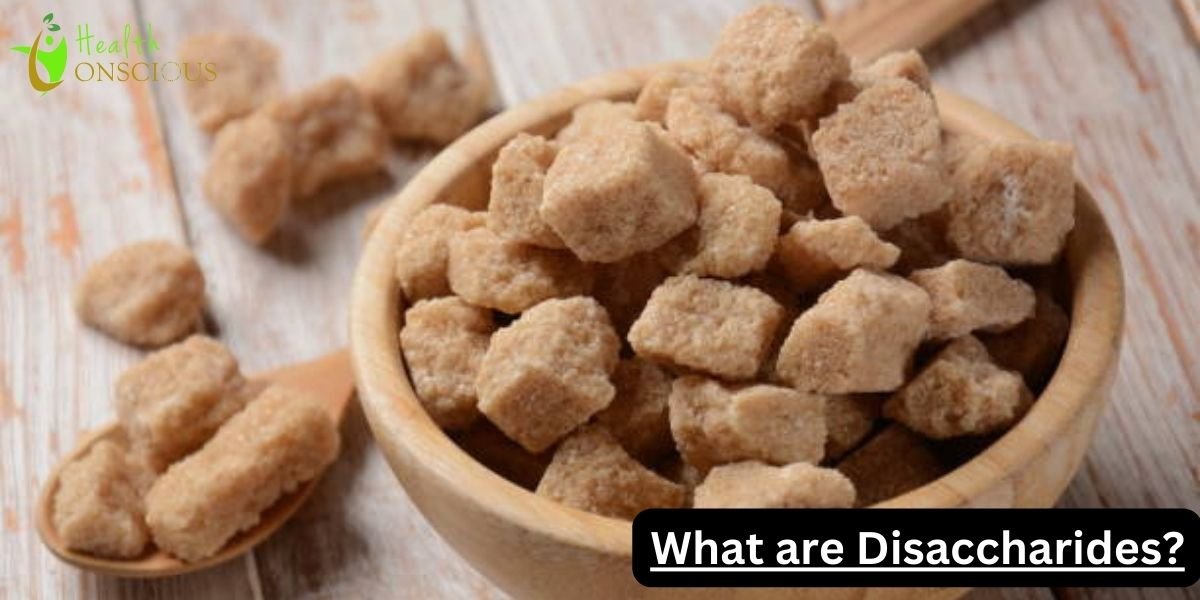What are disaccharides? Disaccharides are an important class of naturally occurring carbohydrates involved in energy metabolism, nutrition, and structure in various organisms. Frankly, disaccharides consist of two monosaccharide units bonded by a covalent glycosidic bond. To a significant extent, the structure and type of glycosidic bond formed between monosaccharides influence their chemical and biological properties and thus are very relevant not only in the natural world but also for industrial applications. In this article, we have gone into detail on what are disaccharides, including a discussion of their molecular structure, types, examples, biochemical importance, and even real-life applications.
What Are Disaccharides?
A glycosidic bond joins two monosaccharide molecules to form disaccharides. This bond is usually covalent between two sugar molecules. Typically, a dehydration, or condensation, reaction forms the bond, leading to the loss of a water molecule during its formation. What are disaccharides? The result is a disaccharide formed with the molecular formula C₁₂H₂₂O₁₁. Although the molecular formula would be the same, the types of monosaccharides as well as the glycosidic bond linkage result in different biological functions and chemical properties. So, we can generally say that.
Formation of Disaccharides: The Glycosidic Bond
The glycosidic bond is therefore between the anomeric carbon of one monosaccharide and a hydroxyl group of another monosaccharide. The orientation of the ring structure can be different depending on the type of monosaccharide and the direction of the hydroxyl group on the anomeric carbon. What are disaccharides? This is why there are different kinds of glycosidic linkages. Its two major kinds are alpha (α) and beta (β) linkages, which differ according to the orientation of the hydroxyl group relative to the ring structure.
The α can be found in maltose in between two glucose molecules, and β can be found in lactose in between glucose and galactose. When the anomeric carbon hydroxyl of one sugar molecule reacts with the hydroxyl of another monosaccharide, a condensation process occurs, resulting in the removal of one water molecule. It is this bond that, in its structure, distinguishes disaccharides, determining their reactivity and digestibility and hence their overall biological role.
Types of Disaccharides
The composition of monosaccharides and the nature of their glycosidic linkages give rise to a variety of disaccharide types, each with unique functions. The most common and well-known disaccharides are as follows:
- Sucrose
- Lactose
- Maltose
- Trehalose
- Cellobiose
- Isomaltose
Let’s discuss them one by one in detail.
1. Sucrose (table sugar)
Monosaccharides: Glucose + Fructose
Glycosidic Bond: α(1→2)β glycosidic bond
Chemical Formula: C₁₂H₂₂O₁₁
Structure: Sucrose is a composition of one glucose molecule and one fructose molecule joined by an α(1→2)β glycosidic bond. This process bonds the anomeric carbon of glucose to the second carbon of fructose, causing sucrose to become a non-reducing sugar. Since the glycosidic bond involves glucose and fructose anomeric carbons, they cannot participate in redox reactions.
Sources and Biological Function: Sucrose is the most important sugar used as food, occurring naturally in sugar cane, sugar beets, and many fruits and vegetables. It provides a good source of energy in the diet of higher animals and is used by the plant to transfer energy throughout the length of its structures. In the human digestive health system, sucrase breaks down sucrose into its simple monosaccharide components for absorption.
Examples:
- Common table sugar
- Found naturally in fruits and vegetables
2. Lactose (milk sugar)
Monosaccharides: Glucose + Galactose
Glycosidic Bond: β(1→4)
Chemical Formula: C₁₂H₂₂O₁₁
Structure: Lactose is a glucose molecule bonded to a galactose molecule by a β(1→4) glycosidic bond. The hydroxyl group from the anomeric carbon of galactose forms a bond with the fourth carbon of glucose. Lactose is a reducing sugar because the glucose unit contains a free anomeric carbon that can open up to form an aldehyde group, allowing for a redox reaction.
Sources and Biological Function: The primary source of lactose is found in milk and dairy products. It is the primary energy source for growth and development in infants. An enzyme known as lactase in human gut health breaks down lactose into its constituent monosaccharides, glucose, and galactose. However, most adults experience lactose insensitivity due to insufficient lactase enzyme production, which restricts lactose digestion.
Examples:
- Milk and dairy products
3. Maltose (Malt Sugar)
Monosaccharides: Glucose + Glucose
Glycosidic Bond: it’s α(1→4)
Chemical Formula: The chemical formula of maltose is C₁₂H₂₂O₁₁
Structure: Maltose is a maltodextrin or glucose polymer consisting of an α(1→4) glycosidic linkage that bonds two glucose units together. α(1→4) bond involves the bonding of the first carbon atom of one glucose molecule to the fourth carbon of the other glucose molecule. In maltose, the free anomeric carbon of glucose forms a reduced sugar.
Sources and Biological Function: Maltose, a breakdown product of starch, is found in malting foodstuffs like brewing and cereal. For humans and animals, maltase serves to break down maltose into glucose, producing energy on demand. Maltase activity in the small intestine means that maltose breaks up into glucose molecules for effective absorption.What is the macromolecule for monosaccharides when they are linked together like glucose?
Examples
- Sprouting seeds
- Malt products, like malted milk,
4. Trehalose
Monosaccharides: Glucose + Glucose
Glycosidic Bond: α(1→1)
Chemical Formula: The chemical formula of trehalose is C₁₂H₂₂O₁₁.
Structure: Trehalose is a nonreducing sugar that contains two glucose units bonded by an α(1→1) glycosidic link. The bond connecting anomeric carbons in both glucose molecules gives it this name. Because neither glucose molecule can open up to the aldehyde form, it is considered a nonreducing sugar.
Fungi, insects, and certain other plants contain trehalose. It plays an important protective role by stabilizing proteins and cell membranes under conditions of extreme stress, such as desiccation, freezing, and high temperatures. Biotechnological applications such as protein storage and preservation utilize its stability.
Examples:
- The compound occurs in mushrooms and yeast.
- The insect equivalent of blood in other organisms is also present in the hemolymph of insects.
5. Cellobiose
Monosaccharides: Glucose + Glucose
Glycosidic Linkage: β(1→4)
Molecular Formula: The chemical formula of cellobiose is C₁₂H₂₂O₁₁
Structure: A glycosidic bond links two glucose molecules to form cellobiose. Because it has the glucose unit carrying a free anomeric carbon, this configuration makes cellobiose a reducing sugar.
Source and Biological Function: Cellobiose is an intermediate of cellulose hydrolysis, a major component of plant cell wall material. Herbivores and some cellulase-producing bacteria primarily use it. Humans do not have the enzyme required to degrade cellobiose into glucose and thus are unable to degrade it.
Examples:
- Plant cell walls contain it as a component.
- The wood and paper industries use it as a breakdown product.
6. Isomaltose
Monosaccharides: Glucose + Glucose
Glycosidic Linkage: α(1→6)
Chemical Formula: C₁₂H₂₂O₁₁
Structure: Isomaltose consists of two glucose units joined by an α(1→6) glycosidic bond. Such linkage occurs at branch points in starch and glycogen.
Sources and Biological Function: The digestion of starch and glycogen primarily produces isomaltose as an intermediate byproduct. It acts as reducing sugar since one of its glucose units has a free anomeric carbon.
Examples:
- It participates in the degradation of glycogen and starch.
- Human bodies’ metabolic pathways produce this substance.
The structural aspects of disaccharides
What are disaccharides? Different disaccharides have different structures because of the way the glycosidic bond is oriented and the types of monosaccharides that make them up. These differences show up in their physical properties, sweetness levels, and how simple they are to digest.
- Monosaccharide Components
The general chemical properties of the disaccharide depend on the monosaccharide building blocks that will form a disaccharide. For example, glucose and galactose have certain molecular structures in monosaccharides. The positioning of OH groups on their carbon atoms either forms or inhibits glycosidic bonds in the resulting disaccharides, thereby giving them specific properties.
- Glycosidic Bond Types
Glycosidic linkages, which connect monosaccharides to form disaccharides, can exhibit a variety of variations, leading to a wide range of chemical and biological properties.
- Alpha (α) Linkages: When the hydroxyl group on the anomeric carbon of the monosaccharide points downward, below the plane of the sugar ring.
- Beta (β) Linkages: When the hydroxyl group on the anomeric carbon is above the plane of the sugar ring.
These differences in the orientation of the glycosidic bond affect the susceptibility and stability of the disaccharide. For example, the α(1→4) linkage of maltose is easily broken by the enzyme maltase; the β(1→4) linkage of cellulose and, by extension, cellobiose is not. Human digestive enzymes cannot break the latter.
- Reducing vs. Non-Reducing Sugars
Disaccharides fall into two subclasses: reducing and non-reducing, depending on whether an aldehyde group can open from a free anomeric carbon.
- Reducing Sugars: These sugars have a free anomeric carbon that can participate in oxidation-reduction reactions. Examples include monosaccharides maltose and lactose.
- Non-Reducing Sugars: Both the anomeric carbons are involved in the glycosidic bond, so these sugars do not have a free anomeric carbon. Sucrose and trehalose are excellent examples of non-reducing disaccharides.
The biological importance of disaccharides
What are disaccharides? Disaccharides play a vital role in various processes in living systems. They are involved in storing and passing on energy, and they act as messengers for the cell’s communication processes. They also greatly contribute to providing structural support to living organisms. We can classify them into the following three categories:
Energy Sources: Sucrose, lactose, and maltose are disaccharides that release quick energy. Digestion enzymes (Sucrase, Lactase, and Maltase) in humans cleave these sugars into their monosaccharide units, which the blood absorbs.
Structural Components: Cellobiose is a significant disaccharide unit of cellulose, one of the prime structural components of plant cell walls. The strength of plant cell walls is due to the presence of strong β(1→4) linkage.
Protective Functions: Trehalose stabilizes proteins, lipids, and other cellular elements, particularly when cells encounter stress conditions like desiccation, high temperatures, or freezing. This stabilization is inevitable in organisms that need to survive even the most harsh environmental conditions.
Signaling molecules play a crucial role in cellular recognition and signaling processes. Some glycosidic linkages affect how cells can interact with other cells and their surrounding extracellular matrix.
Real-world applications of disaccharides
The valuable properties of disaccharides explain their importance in industrial and scientific applications.
The food industry uses sucrose and lactose as prerequisites for sweeteners, dairy products, and beverages. They also use it in fermentation, where it serves as a substrate for yeast and bacteria.
Pharmaceuticals: Trehalose is a disaccharide that acts as a stabilizer in drug formulations and vaccines. This helps preserve the integrity of proteins and enzymes during storage and transportation.
Biotechnology: Diagnostic aids, biosensors, and fermentation processes all use disaccharides.
Frequently Asked Questions (FAQs)
Q1: Why is a disaccharide reducing or non-reducing?
Ans: The presence of free anomeric carbon determines whether a disaccharide is reducing or non-reducing. Non-reducing sugars, such as sucrose, have both their anomeric carbons involved in a glycosidic bond, which makes them resistant to oxidation.
Q2: Why is lactose essential for infants?
Ans: Lactose provides glucose and galactose, which are essential nutrients that help in growth and development, especially for brain functions in infants.
Q3: What role do disaccharides play in nature?
Disaccharides serve as energy, structural, and protective molecules for organisms under extreme conditions.
Q4: Is a disaccharide a sugar?
Indeed, it falls under the category of sugar and carbohydrate. It is sweeter and provides energy to all living organisms.
Q5: What is the metabolism of disaccharides?
Specific enzymes, such as sucrase for sucrose, lactase for lactose, and maltase for maltose, hydrolyze every type of disaccharide into monosaccharides.
Q6. Is sucrose toxic or harmful in large quantities?
Large amounts of sucrose may lead to issues with diet, obesity, diabetes, or dental caries. Moderate consumption, when taken as part of a balanced diet, should not cause any problems.
Q7: Why are some people lactose intolerant?
Ans: Lactose intolerance occurs when the body produces insufficient lactase enzyme, making it difficult to digest lactose, leading to digestive symptoms.
Concluding Thoughts!
What are disaccharides? Disaccharides play a fundamental role in biological systems and industrial applications. Their chemical structure is made up of specific glycosidic bonds and monosaccharide units. This structure determines their function as energy sources, structural parts, and stabilizers in environments with a lot of stress. Chemical exploration of disaccharides provides insight into diverse functions in metabolism, structural biology, and applied sciences. Understanding disaccharides enables us to use their properties for useful health, nutritional, and biotechnological innovations, thus emphasizing their value in science and industry.




1 Comment
Comments are closed.